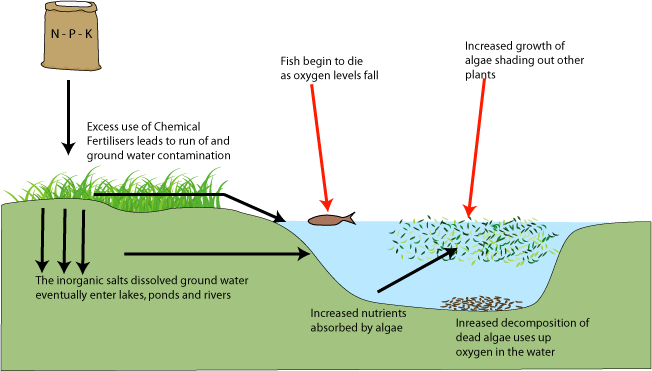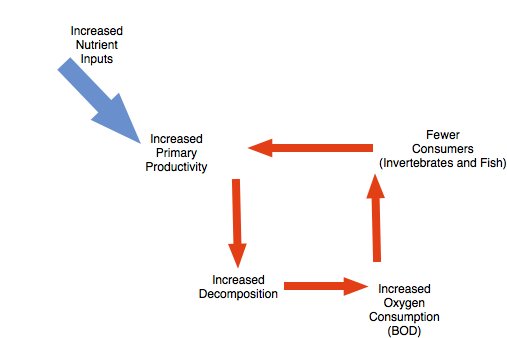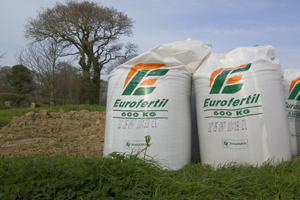5.4. 0: Eutrophication
 Many lakes around the world have been effected by discharges of nutrients directly into them. In severe cases this can lead to the process of eutrophication. Inputs of nutrients from sources such excessive over use chemical fertilizers on agricultural land can lead to accelerated growth of algae creating massive blooms. Some of these blooms can be are toxic. More algae mean more decomposition as the increased numbers die off rapidly, this in turn uses up available oxygen within the water body and a reduction of both diversity and numbers of organisms up the food chain. The dense algal populations also reduce light penetration with other aquatic vegetation unable to compete for limiting light levels.
Many lakes around the world have been effected by discharges of nutrients directly into them. In severe cases this can lead to the process of eutrophication. Inputs of nutrients from sources such excessive over use chemical fertilizers on agricultural land can lead to accelerated growth of algae creating massive blooms. Some of these blooms can be are toxic. More algae mean more decomposition as the increased numbers die off rapidly, this in turn uses up available oxygen within the water body and a reduction of both diversity and numbers of organisms up the food chain. The dense algal populations also reduce light penetration with other aquatic vegetation unable to compete for limiting light levels.
A spiral of various positive feedback loops can then be forced into effect as increased competition for light reduces vegetation cover leading to less nutrients being removed by vegetation and so more nutrients being available to aglae. Loss of plant vegetation reduces cover for predatory fish which suffer from lack of oxygen in the water and so their numbers fall. Numbers of herbivorous fish may at first increase but soon reduce as vegetation disappears. And so on the spirals run.
Sources of Anthropogenic Eutrophication (from Planning and Management of Lakes and Reservoirs: An Integrated Approach to Eutrophication)
| Source | Type of problem | |
| Point Sources | ||
| Power plants | Combustion of fossil fuels emit nitrogen products into the atmosphere, which are carried down by rainfall and other processes, causing eutrophication in water bodies |
|
| Sewage Treatment Plants | Treatment process releases oxides of N and P in effluents, which drain into water bodies |
|
| Industrial Plants | Industrial processes release N and P products in effluents, which drain into water bodies |
|
| Non-Point Sources | ||
| Agriculture | Farming practices, including use of fertilisers rich in N and P, deposit increased amounts of these nutrients in the soil. Run-off from these farms cause eutrophication in water bodies |
|
| Sewage | Direct discharge of sewage from domestic sources, not connected to treatment plants, will eventually make its way into water bodies |
|

